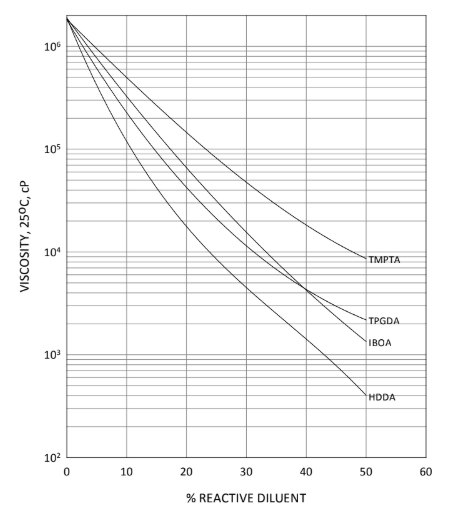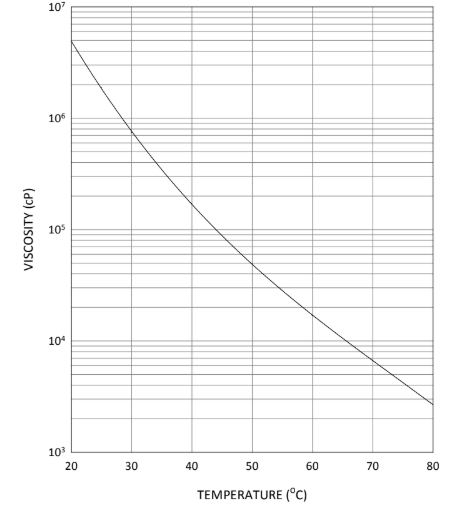Enhanced TDS
Identification & Functionality
- Blend
- No
- CASE Ingredients Functions
- Chemical Family
- Function
- Binder
- Product Code
- MITM11532
- Single Ingredient
- Yes
- Technologies
- Product Families
Features & Benefits
- CASE Ingredients Features
- Labeling Claims
- Performance Highlights
EBECRYL® 8809 is characterized by:
- No intentionally added tin, heavy metals*, or quinones
- Light color
- No diluting monomers
UV/EB cured products containing EBECRYL® 8809 are characterized by the following performance properties
- Regulation friendly for tin, heavy metals*, and quinones
- Excellent exterior durability
- Excellent toughness
- Non-yellowing
The actual properties of UV/EB cured products also depend on the selection of other formulation components such as reactive diluents, additives and photoinitiators.
Applications & Uses
- Application Method
- Compatible Substrates & Surfaces
- Cure Method
- Markets
- Applications
- Product Applications
Formulated UV/EB curable products containing EBECRYL 8809 may be applied via direct or reverse roll, offset gravure, metering rod, slot die, knife over roll, air knife, curtain, immersion and spin coating methods, as well as screen printing. EBECRYL 8809 is recommended for use in:
- Applications that must meet regulations for tin, heavy metal*, and quinone content Screen inks and coatings on various substrates
- Non-yellowing, exterior durable coatings
- Coatings for wood and plastics
Properties
- Physical Form
- Product Properties
- Regulation friendly for tin, heavy metals*, and quinones
- Excellent exterior durability
- Excellent toughness
- Non-yellowing
Technical Details & Test Data
- Technical Data
EBECRYL® 8809 - Viscosity Reduction With Reactive Diluent

Graph I shows the viscosity reduction of EBECRYL 8809 with 1,6-hexanediol diacrylate (HDDA), isobornyl acrylate (IBOA), tripropylene glycol diacrylate (TPGDA) and trimethylolpropane triacrylate (TMPTA) Although viscosity reduction can be achieved with non-reactive solvents, reactive diluents are preferred because they are essentially 100 percent converted during UV/EB exposure to form a part of the coating or ink, thus reducing solvent emissions. The specific reactive diluents used will influence performance properties such as hardness and flexibility.
EBECRYL® 8809 - Viscosity vs. Temperature/p>

Packaging & Availability
- Packaging Type
Principal Information
- Group Principal Number
- S000001
- Principal
Storage & Handling
- Storage Conditions
- Care should be taken not to expose the product to high temperature conditions, direct sunlight, ignition sources, oxidizing agents, alkalis or acids.
- This might cause uncontrollable polymerization of the product with the generation of heat.
- Storage and handling should be in stainless steel, amber glass, amber polyethylene or baked phenolic lined containers.
- Procedures that remove or displace oxygen from the material should be avoided.
- Do not store this material under an oxygen free atmosphere.
- Dry air is recommended to displace material removed from the container.
- Wash thoroughly after handling.
- Keep container tightly closed.
- Use with adequate ventilation.
Other
- Appearance
- Clear liquid
- Appearance (SDS)
- Clear viscous liquid
- Color (SDS)
- Clear colorless to light straw
- Insoluble in (SDS)
- Water
- Item Number
- Odor (SDS)
- Acrylate
- Other Hazards
- Polymerization may occur from excessive heat, contamination or exposure to direct sunlight .
- Protect from Freezing
- Yes
- Temperature Control
- Yes
- USA/DOT UN Number
- Not Applicable
- Chemical Properties
Value Units Test Method / Conditions Hydroquinone Content max. 10.0 ppm ppm High Performance Liquid Chromatography (HPLC) typical property, not measured Methoxyhydroquinone Content max. 10.0 ppm ppm High Performance Liquid Chromatography (HPLC) typical property, not measured - Material Composition
Value Units Test Method / Conditions Isocyanate Group Content max. 0.2 % % Oligomer Content 95.0 %(W/W) %(W/W) - Mechanical Properties
Value Units Test Method / Conditions Elongation at Break 24.0 % % UV cured, 125µm thick films Tensile Modulus 198400.0 psi psi at break, UV cured 125 μ thick films Tensile Strength 5000.0 psi psi at break, UV cured 125 μ thick films Tensile Strength 5000.0 psi psi UV cured 125 µ thick films - Optical Properties
Value Units Test Method / Conditions Color Scale max. 1.0 Gardner Gardner Gardner Color Scale - Physical Properties
Value Units Test Method / Conditions Density 1.18 g/mL g/mL at 25°C Glass Transition Temperature (Tg) 67.0 °C °C Dynamic Mechanical Analysis (DMA) at break, UV cured 125 μ thick films Glass Transition Temperature (Tg) 67.0 °C °C Dynamic Mechanical Analysis (DMA) UV cured, 125μm thick films Storage Temperature 39.2-104.0 °F °F Viscosity 16000.0 mPa.s mPa.s at 60°C - SDS Physical and Chemical Properties
Value Units Test Method / Conditions Boiling Point (SDS) min. 100.0 °C °C Density (SDS) 1.1-1.2 g/cm³ g/cm³ Flash Point (SDS) min. 100.0 °C °C Vapor Pressure (SDS) max. 0.01 hPa hPa at 20°C Viscosity (SDS) 10000.0-20000.0 mPa.s mPa.s at 60°C, rpm:10, very highly viscous liquid Volatile Content (SDS) max. 0.5 % % - Shelf Life & Stability
Value Units Test Method / Conditions Shelf Life 0.0 d d
